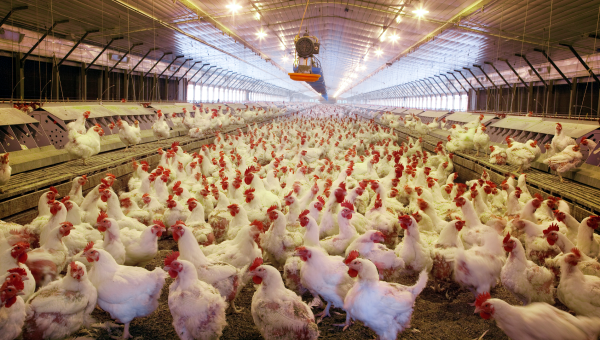As they help with your production and market planning, they give you greater predictability in the sales mix, increasing efficiency and profitability.
As they help with your production and market planning, they give you greater predictability in the sales mix, increasing efficiency and profitability.
As in other sectors, chicken slaughterhouses deal with several variables throughout their production that can directly impact their final product – positively or negatively.
It is clear that these slaughterhouses are looking for a strategy that is the best possible for their business. And this proves to be increasingly difficult, due to an increasingly competitive environment, an increasingly dynamic market and an increasingly demanding public.
The advent of technology in the last two decades has brought many facilities to the sector, in several areas, whether in terms of machinery or information systems. And this was no different in the area of organization and planning in factories in the area of animal production.
Planning software can be used by chicken slaughterhouses to assist in their planning, indicating the best production and sales strategy, considering all variables relevant to their context. All this, of course, aiming at the highest possible profitability. Our MaxiMix system, for example, is a software that assists in the planning of chicken slaughterhouses spread throughout Brazil and abroad, offering the best mix of production and sales for your business.
Below, we explain a little about how planning software can help chicken slaughterhouses to have a sales plan that is as profitable and efficient as possible.
Want to know more about MaxiMix? Just click here →
How can planning software increase your profit margin?
Volatility. Dynamism. Competitiveness. These are some of the challenges that markets in all sectors have to face today. The need to offer the best product, which has a better market position, often ends up making the production process more expensive.
For poultry production, for example, consideration should be given to whoever is exporting to, especially if it is the foreign market, since each country has its preferences for chicken weight and cuts. Or even, one should consider the average weight of chicken batches, to ensure greater product diversification.
If there is not a well-defined understanding of these variables by all areas of the company, the actions will most likely not be defined and planned according to the real needs of production. Consequently, the result will not be the most profitable for the company.
In the case of poultry production, having a planning software that allows calculating the best production and sales strategy, considering all these variables, will allow the articulation of all areas of the company: purchasing, production, marketing and sales. That way, all sectors will be on the same page, working according to clear guidelines on which product they are dealing with, how to produce them and to whom to sell them.
With articulated and data-based planning, the slaughterhouse will have greater production predictability and greater sales profitability.
But then, which variables should be considered?
Well, of course there are many factors to consider in a production line. This depends on the size of the slaughterhouse, where it is located and your sales targets. But, in general, we can outline 3 main variables that should always be considered:
→ 1. raw material profile
It is very important to always consider the characteristics of your chicken lots: average weight, strain and cost. This ensures greater diversification and productivity.
→ 2. production structure
When considering the production capacity of your plant, you not only make sure of the possibilities, but also of your production constraints, to create a profitable and possible planning. For example, taking into account the capacity of each process involved, such as cutting lines, freezing tunnel, etc. In addition, considering all of your industry costs allows for more predictable and scalable production planning. Thus, you will have better control of the plant, optimizing your processes and costs.
→ 3. market demands
Knowing the context of the market for which it will be supplied helps to understand the type of product that must be produced. For example, if it’s production for export, it’s critical to understand that different countries have different preferences for chicken weight and cuts. And the same goes for the domestic market, since each region of the country has different chicken consumption habits.
Greater predictability, articulation between sectors and sales profitability
Developing an efficient strategy for your product mix with planning software, considering the various variables that can affect your production, allows for greater predictability of your actions. Consequently, it leads to higher sales profitability, since your goals and plans are clearly defined.
In the same way, poultry producers can benefit from the use of planning software as they allow greater articulation between the production, sales and marketing sectors, aligning strategies according to the real needs and demands of both production and sales.
